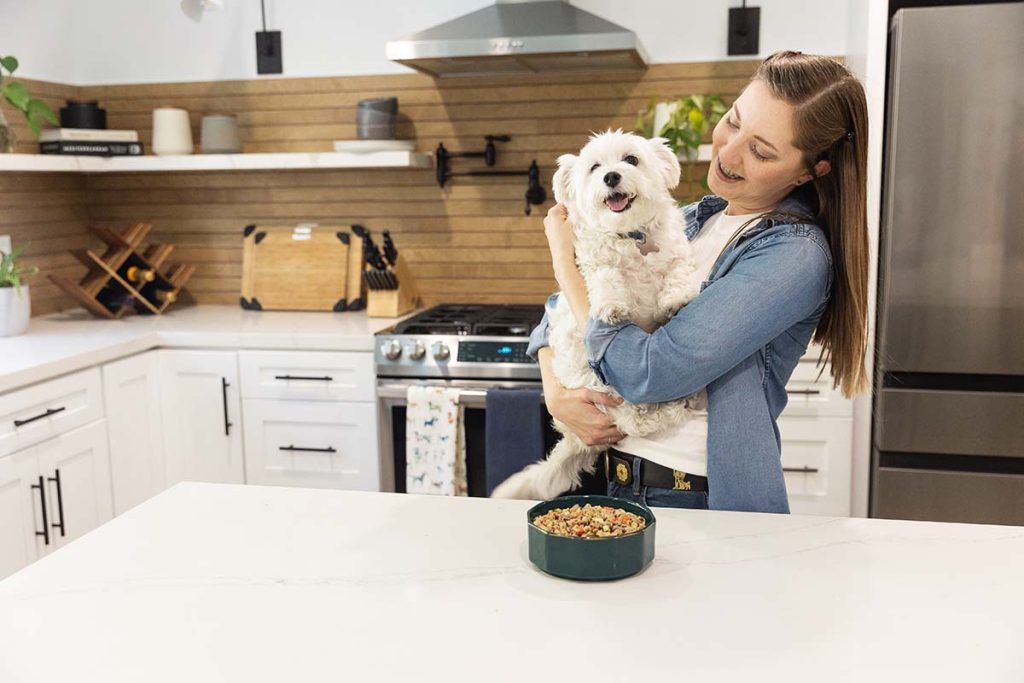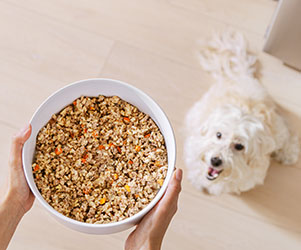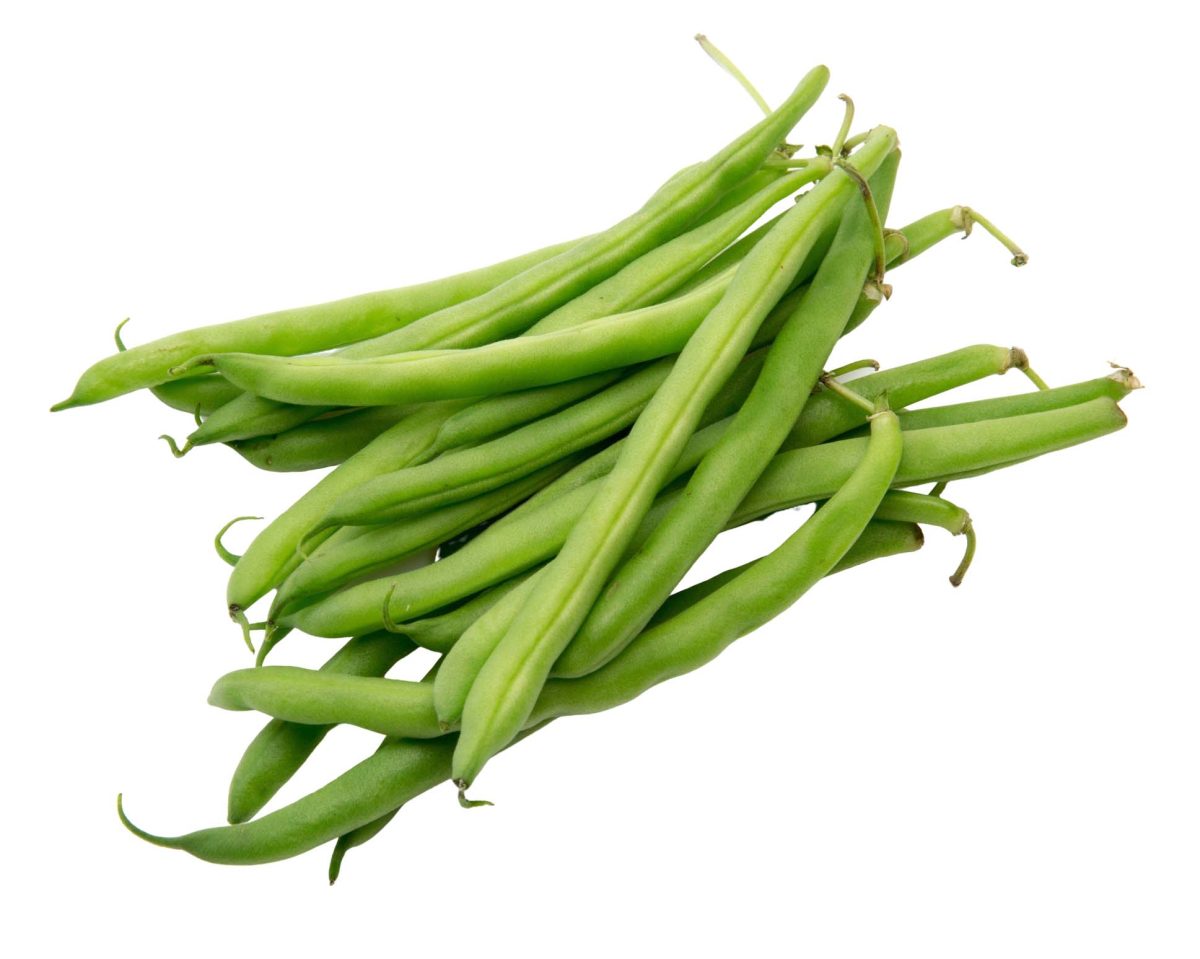Dog Food For Picky Eaters
Learn why your dog is being selective as well as how to appease your picky eaters tastes.
For creatures willing to consume items ranging from stray socks to poop, the idea that dogs could be picky eaters seems almost laughable—but it happens more often than you might think. Luckily, frustrated pet parents don’t have to look far for dog food for picky eaters.
While all dogs can be finicky, small breeds are especially prone to picky eating. In a study conducted by Applied Food Biotechnology International, research showed that Maltese, Yorkshire terriers, King Charles cavalier spaniels, and other small breed dogs were less focused on their pet food and more easily distracted during feeding. The researchers suspect that these breeds might be more influenced by food palatability than larger dogs.
“Dogs tend to eat anything and everything,” says Jessica Wilson, DVM, veterinary outreach trainer for JustFoodForDogs. “Some dogs have no biases and will eat whatever is in front of them. But some dogs are a little more particular.”
Why Is My Dog a Picky Eater?
Eating the same food at each meal could lead to boredom and make your dog less enthusiastic about mealtimes. However, picky eating isn’t always about preference. Wilson notes that illnesses ranging from an upset stomach to dental disease could cause your pooch to turn up his nose at his food bowl.
“If your veterinarian finds a medical problem that explains why your dog is picky, the goal is to come up with a game plan together—one that feeds your dog but also takes care of their specific nutritional needs for their disease.”
To test if their avoidance is due to picky eating habits or an underlying health issue, Wilson suggests offering your dog tempting foods. Foods like plain boiled chicken breast, thigh meat, or even hot dogs to see if their appetite suddenly reappears.
“A dog that is begging you for a bite of your dinner, hovering under the table for crumbs, and taking dog treats still has an appetite,” she says. “They just don’t like the food you’re offering.”
How to Help Your Picky Eater

It’s important to help your dog develop good eating habits. Dogs learn that refusing one kind of food will send you straight to the pantry to choose something different. They may start to become picky eaters, only chowing down when their preferred food is offered.
Limiting the varieties of dog food you offer, cutting back on treats, waiting before switching out food, and having a regular feeding schedule can all be helpful strategies to address picky eating. (For more tips and helpful information, read Do You Have a Finicky Dog?)
Pet owners should be careful about offering your dog extra treats or table scraps of human food in the quest to get them to eat. For optimal overall health, dogs need specially formulated balanced diets, not just leftovers.
“We want picky dogs eating, but we want them eating something that’s balanced,” says Wilson.
Dogs that continue steering clear of the food bowl—but enthusiastically gobble up other foods—might simply need to transition to a new food to address their picky eating habits.
Rather than just swapping one type of food for another, Wilson advises a slow transition. Start by adding small amounts of new food to their regular food. Slowly change the ratios over several days; after two weeks, your dog should be fully transitioned to their new food.
“Dogs can have sensitive tummies,” she explains. “Any time we recommend a different diet or the addition of a new food, we always recommend taking it slow.”
Making changes to their environment could also help with your dog’s picky eating. Wilson notes that dogs that are fed in loud environments or too close to other animals might be reluctant to eat. Try moving the your dog’s bowl of food. Feeding them in quieter, less distracting spots (like their kennel) could help your dog feel safe enough to eat their meals.
Elevating dog bowls for larger or senior pets could also ease some of the potential discomfort associated with leaning down to eat.
The Best Dog Food for Picky Eaters

Your dog might eat out of a metal bowl on the floor, but that doesn’t mean flavor, aroma, and texture aren’t an important part of their mealtime experience.
Wilson believes that adding a little warm water or bone broth to dog food to bring out the aroma might be enough to tempt even the pickiest eaters to take a few bites. You could also try adding high-quality dog food topper like freeze-dried beef liver.
There is no magic recipe that appeals to all dogs. Most dogs—like most people—tend to favor foods that are fresh, flavorful, and higher in fat and protein.
JustFoodForDogs Chicken & White Rice recipe is gluten-free and made with real chicken and chicken liver. The Turkey and Whole Wheat Macaroni recipe is made with real turkey and turkey liver. No by-products, here!
Both fresh dog food recipes are made from whole-food ingredients that help dog maintain a healthy weight. Veterinary nutritionists carefully formulated a balanced blend of proteins, carbohydrates, and fats that are palatable for even the pickiest dogs. All recipes use human-grade ingredients approved by the USDA and are free from preservatives and fillers.
“We know that fat tastes good,” Wilson says. “When we have picky eaters, we recommend recipes that are a little higher in fat because fussy dogs gravitate toward fat, which is quite palatable.”
However, higher fat formulations are not recommended for all dogs. Before making the switch to a new food, ask your veterinarian about the best dog food for picky eaters based on their breed, age, and health. You’ll receive guidance on the correct number of calories and the appropriate formulation needed to ensure your dog is getting the balanced nutrition they need.
Best Dry Dog Food for Picky Eaters
Conventional kibble is akin to fast food, according to Wilson. It’s heavily processed, which makes it shelf-stable and convenient. But that also means the nutrients it does contain come from meals and powders, rather than fresh, whole ingredients.
Adding a fresh whole-food topper—a mixture of quality ingredients such as real meats and veggies—to kibble is one option to add flavor, moisture, and additional nutrients to bland dry dog food brands. Wilson notes that mixers can also be a great way to introduce your dog to more nutritious (and tasty) foods.
“It’s a great way to add some fresh whole food to their diet and entice dogs to eat all of their food for the sake of keeping weight on and getting all of their nutrients in,” she says. “I’d much rather see a dog eating kibble with a topper than not eating at all.”
Best Canned Food for Picky Eaters
Dogs often prefer canned foods to dry kibble because the moisture creates a stronger aroma, making the food more appealing. Canned wet dog foods also tend to be more palatable.
But what may taste great to your dog isn’t always the best for his health. Wilson suggests paying close attention to the list of ingredients on any canned dog food; higher quality dog foods will list more whole foods and fewer processed ingredients on their labels.
Dog owners should also look for a nutritional adequacy statement from the manufacturer on any dog food label or packaging. That will tell you whether or not the food conforms to the American Association of Feed Control Officials (AAFCO) science-based nutritional standards or feeding trial protocols. These standards apply to canned and dry dog foods, as well as those made from fresh whole foods.
Foods that meet the AAFCO-established nutrient profile are nutritionally adequate. But if you’re looking for a different food option that appeals to your picky eater’s palate and packs the biggest nutritional benefit, consider one that goes above and beyond the minimum standards and actually completes feeding trials. All of the JustFoodForDogs meal options have passed feeding trials at Cal Poly Pomona University that exceed the minimum AAFCO standards.

Picky Eaters with Sensitive Stomachs
Choosing food for a dog with a sensitive stomach requires extra care. That’s when a dog needs limited-ingredient food, for example.
Wilson suggests steering clear of high-fat foods and offering lower-fat options with appealing flavor profiles, which can be hard to find among most commercial dog food options. That’s one of the reasons behind the popularity of limited-ingredient Chicken or grain-free Fish & Sweet Potato meals for dogs with sensitivities. These foods are formulated with the right balance of nutrients for optimal health. (Minus the extra fat that may cause gastrointestinal upset in dogs with sensitive stomachs.)
Even lower-fat foods should be introduced slowly to prevent stomach upset. Start by adding small amounts of the new food to their old food. Increase the ratio over time until your dog has fully transitioned to their new diet. Taking the extra time can keep their sensitive stomachs from acting up.
Choosing the Right Dog Food For Your Picky Eater
Every pet has a unique palate. Your Golden Retriever might love high protein beef while the Pekingese across the street prefers venison. Choosing healthy dog food that appeals to your dog’s specific palate is one of the most important aspects of addressing picky eater issues. Finding your dog’s diet may require some trial and error, so patience is key.
Your dog’s specific nutritional needs are equally important—and often harder for pet parents to determine and address on their own.
“Dogs are all individuals and we need to keep that in mind,” Wilson advises. “Get connected with your veterinarian to make sure your picky eater is getting the right food and the right amount of food.”
Your veterinarian or a nutrition expert can help you take many key factors into consideration, such as your dog’s breed and life stage. Puppies and senior dogs have different nutritional needs than adult dogs. And large breed dogs have different calorie needs than small breed dogs, based on their energy demands.
When you finally find a soft/wet or dry food that gets your fussy eater’s tail wagging at feeding time, it can be tempting to consider the problem solved…especially if you’ve been struggling to get your dog to eat for a long time. But working with an expert ensures that you’ll find a properly balanced food that keeps your picky eater happy and healthy in the long run.
Hungry for more to satisfy your dog’s appetite? You can take a look at just how transparent our ingredients are on our website, Chewy, Amazon, and Petco. If your pup needs a probiotic for their gut, glucosamine/chondroitin boost for joint health, omega-3 fatty acids for skin & coat, or extra immune system support, explore JustFoodForDogs health supplements.
This content is for informational use only and does not replace professional nutrition and/or medical advice, diagnosis, or treatment. It is not a substitute for and should not be relied upon for specific nutrition and/or medical recommendations. Please talk with your veterinarian about any questions or concerns.








